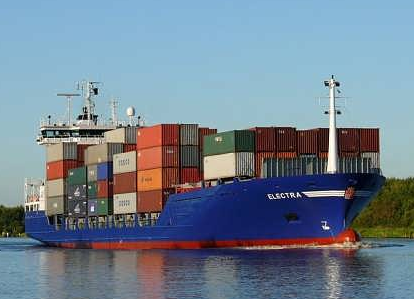
Freight forwarders should be familiar with how to choose appropriate international ocean shippers or means of transportation, and adequately and reasonably present their services to their customers. There are 4 types of transportation in the Global Shipping Index: liner group transportation, non-liner group transportation, non-vessel carrier transportation, and regular ship transportation.
The liner gang is an organization that operates liners on special waterways according to the scheduled sailing schedule. It has a mutual interest rate table and a fixed port of entry. For the carrier, the rules and regulations of the liner gang have the benefits of a stable freight rate and on-time logistics transportation, but the freight rate is generally higher.

Qingdao Freight Forwarding Company
A non-vessel carrier refers to a shipper who operates on time in the industry and does not have ships that are required to operate ocean transportation. Although the connection to the specific carrier is the shipper, the relative specific shipper appears as the true identity of the carrier. Its functions as a trustee are: to undertake the obligations caused by water freight transportation.
Use water shippers, including liner gangs and non-liner gangs shipping and presentation service items; expand the scope of services according to door-to-door delivery. There is no fixed waterway and timetable for regular ship transportation, and it can operate on all waterways. The quotation is generally negotiable.
For the carrier, there are several considerations in which means of transport to choose. As a cargo transport agent, Qingdao Shipping should carefully check the implementation status of the relevant shippers.
First, the timeliness of logistics and transportation. If the goods must be shipped out at fixed time intervals, select a liner with a fixed fixed seaport, fixed fixed interest rate, and strict sailing schedule.
Second, the delivery rate. In order to better consider the requirements of a certain type of goods to be shipped within the required time, the carrier will pay more attention to the problem of considering the delivery rate. If you can consider its regulations, it is not easy to consider the cost.
Third, shipping costs. When the punctuality and speed of delivery are not the key factors that the carrier considers, delivery costs become important.
Fourth, the credibility of delivery. It is another key element to be considered when choosing a shipper. Before choosing a shipping company, it is a useful practice to investigate its overall strength and credibility individually, which will reduce the maritime security bureau's fraud.
Fifth, operating status and obligations. The operating conditions and pressures of any person or operator of the vessel used by the carrier should be investigated.
On the surface, anyone on a ship has the right to use the ship, but in fact, he pledged the ship to a financial institution and became a ship operator based on the operating contract with the financial institution. The ship operator may be a ship charterer on time. According to the charter period, the ship can retain the goods delivered by the operator for the unpaid rent.
① Vessel filing and vessel tonnage. Every vessel shall have a national loan, shall carry out vessel filing in a certain country, and shall have the right to suspend its own five-star red flag.
②Gross Registered Tonnage (GRT). The total recorded ton is the total capacity of the vessel accurately measured based on a ton of 150 cubic inches.
③Net record ton (NRT). Net record ton is the capacity accurately measured after deducting the indoor space occupied by equipment and the place where sailors settled from the total record ton.
④ Bulk weighing capacity. It is all the indoor space in which the ship can be loaded, including the hatch and the opening on the main deck for better cargo handling.
⑤Packing capacity. It refers to all the indoor space in the warehouse that can be used to package goods.
⑥Total cargo weight (DWT). It is the ship's loading capacity indicated by the net weight tonnage. The loading capacity should be the net weight deducted from the total cargo weight of fuel, weapons and equipment, water and food.
⑦ Load capacity line. The mark of the deadweight line is to indicate how heavy the cargo can be loaded without seriously jeopardizing the safety of the vessel. The distance from the load line to the main deck is called the freeboard.
⑧ Ship class. Ship class has a very important function for marine insurance, because the insurance fee paid by ships of higher class is less than that of ships of lower class. Freight forwarders should also master the following general types of freight ships:
①Traditional liner. This type of ship shows on-time logistics and transportation, and generally carries scattered or small-batch goods. Use the hanger or lifting equipment in the ship to carry cargo, and carry out the stowage of goods in the ship by manpower.
②Half cargo ship or half tugboat. This type of vessel carries bulk cargo and pre-loaded shipping containers or cargo on a pallet. Stowage is carried out with the help of electric forklifts, and shipping containers can also be loaded on the open passenger cabin or on the main deck.
③All cargo ships. It is a vessel built to load shipping containers. It uses its own loading, unloading and handling machinery and equipment or benefits.